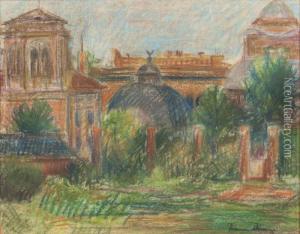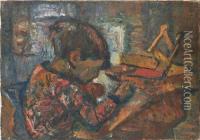Diener Denes Paintings
Denes Dehner, often referred to as Diener Dánes in Hungarian, was a Hungarian visual artist who was known for his work in the interwar period. Born on April 10, 1904, in Budapest, Hungary, Diener grew up in a period marked by significant political and social changes that influenced his artistic journey. He studied art in Budapest and later in other European centers of art such as Munich and Paris, which were hubs for avant-garde movements at the time.
Diener's early work was heavily influenced by the Expressionist movement, which was prominent in Central Europe during the early 20th century. His paintings often depicted urban life, landscapes, and still lifes, characterized by bold colors and dynamic brushwork. He was interested in capturing the emotional and psychological experiences of his subjects rather than just their physical appearance, a hallmark of Expressionist art.
During the 1930s, Diener's style evolved as he became increasingly interested in Constructivism and abstraction. He was part of a wave of artists who sought to reflect the modern industrial society in their work through geometric forms and an emphasis on materials and structure. His work during this period can be seen as a dialogue with the principles of Bauhaus and Russian Constructivism, emphasizing functionality, and the integration of art and industry.
However, with the rise of fascist regimes in Europe, the artistic landscape became fraught with peril. World War II and the Holocaust brought devastation, including to the artistic communities to which Diener belonged. The war years were a difficult time for Diener, who was Jewish, and the impact of the conflict is reflected in the somber tones and themes of his mid-20th-century work.
After the war, Diener continued to develop his artistic style, which became more reflective and introspective. His later works often featured harmonious compositions with a subdued palette, indicative of a search for peace and order after the chaos of the war years. He remained active in the Hungarian art scene until his death in Budapest on October 29, 1974.
Throughout his career, Diener Dánes contributed to Hungarian art through his exploration of various modernist styles and his commitment to reflecting the human experience in his work. His legacy is preserved in the collections of several Hungarian museums and in the memories of the artistic community that continues to honor his contributions to 20th-century European art.


